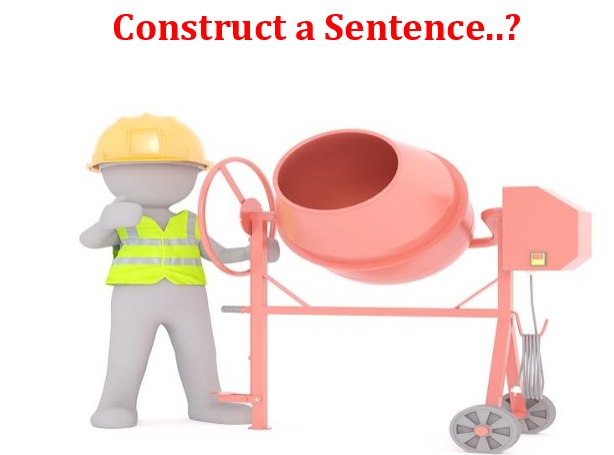Lesson Plan of Sentence Construction English Grade 3rd
Lesson Plan of Sentence Construction
English Grade 3rd
Name of Master Trainer: AMEEN GHOURI DTE at CTSC GHS DERA BAKHA BWP
Topic: Sentence Construction
No. of Participant: 30
Time: 30 Minutes
Planning & Preparation:
Learning Outcomes:
·
Know that words join together to make sentences
·
Trace/copy simple sentences leaving spaces
between words using correct capitalization, punctuation and spelling
·
Relate capitalization to the preliminary letter
of the first word of a sentence
Information for Teacher
·
An alphabet: is a writing
system, a list of symbols for writing. The elementary symbols in an alphabet
are named letters. In an alphabet, each letter is a symbol for a sound or
related sounds.
·
Word: a single distinct meaningful element of speech or
writing. A single unit of language that has meaning and can be spoken or
written.
·
A sentence: is a group of
words that expresses a complete idea and has a subject and a verb
·
It starts with a capital letter and end on a
full stop.
Subject
+ Verb + Object
The
dog bit his master
Resources & Room Layout
Board,
chalk/marker and duster
Worm up activity
·
Act out a simple activity like, “Drink water”
·
Ask the students to tell I words what you just
did and their answer may be:
o
You are drinking water
·
You may look back on the lesson plan “Action
Words” and choose from those action
words for this activity e.g. jump, write, stand.
·
Ask one of the students to act something out.
Such as jump.
·
Ask other students to tell what he/she is doing?
(Expected answer may be: He/she is jumping)
·
Tell the student that what they said are
complete sentences
Development
Activity 1
·
Write a few sentences on the board (ensure the
words are in the student’ vocabulary
·
Read them once with proper stress and
intonation, pausing after each sentence, such as
o
This is a fat cat.
o
Amana has a dog.
o
He is a boy.
·
Ask students to repeat each sentence after you.
·
Ask them to read these sentences on their own in
the same order in which they are written.
·
Point at any sentence on the board and ask
students to read it.
·
Remind the students that words combine to make a
sentence.
·
Remove one word from the sentence and ask the
students, ‘Does the sentence make sense now?’
·
Jumble up the sentences e.g. Cat is this a.
·
Now ask the students does it make sense? (Refer
back to the definition of the sentence)
·
Ask them to open the textbook and identify the
pattern of sentences, it begins with a capital letter and ends on a full stop.
·
Each sentence has a verb in it.
Activity 2
·
Read 3 sentences to the students, stressing on
how we stop when we reach the end of one sentence, take a breath and then go on
to the next one.
·
The sentence may be:
I.
This is an apple.
II.
I drink milk.
III.
He reads a book.
·
Tell them that we show this stop by putting a
little dot, called a full stop.
·
Write sentences with correct capitalization of
first letter of the sentence and a full stop at the end for students to see.
Activity 3
·
Write sentences on the board without
capitalizing the first letter of the sentence and a full stop at its end.
·
The sentence may be:
I.
I play football.
II.
This is a book.
III.
Brush your teeth.
·
Call a few students one by one to the board to
capitalize 1st letter of the sentence and put a full stop at its
end.
·
Write several more sentences on the board
without capitalizing and full stop.
·
Ask the students to write these in their
notebooks, using the capital letter at the beginning and adding the full sop at
the end.
How I will check for understanding
Assessment
·
Write short sentences on the board without
capitalization and full stop.
·
Ask the students to rewrite them using
capitalization and full stop.
·
The sentence may be:
I.
open your book
II.
she has a green parrot
III.
give me a long pencil





Comments
Post a Comment